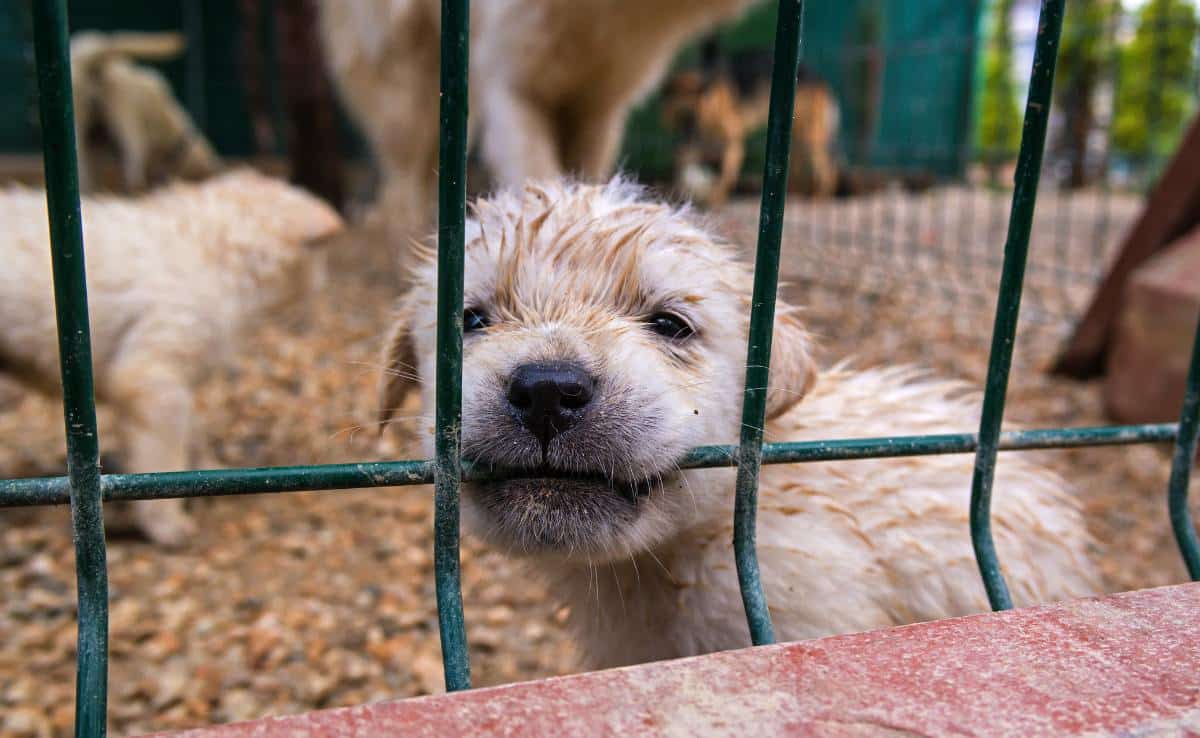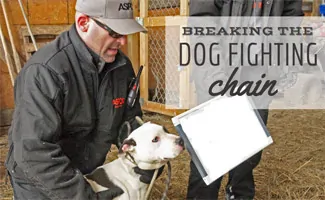When you purchase through links on our site, we may earn a commission. Here’s how it works.

Most people are familiar with the term “puppy mills” and have a generally negative impression of them. But do you really know why puppy mills are bad? We shed light on these inhumane facilities, why they still exist, and how you can avoid buying a mill-produced puppy. We also give you tips on what you can do to help put them out of business.
What Are Puppy Mills?
Puppy mills are large-scale commercial dog breeding facilities whose priorities are profit over animal welfare. These dog factories mass-produce millions of puppies to sell them through pet stores, online “breeders,” and other websites. Some also breed dogs for animal research. Puppy mills are known for unethical practices, deplorable living conditions, poor nutrition, and inadequate health care for mothers and their litters. Unfortunately, these high-volume breeding facilities also exist for other pets, including cats.
Why Are Puppy Mills So Bad?
In addition to having a huge impact on the pet overpopulation problem, puppy mills are bad for dogs for many other reasons.
Puppy Mill Conditions
The most troublesome concerns with puppy mills are the questionable and often horrific living conditions.
- Dogs and puppies live in cramped wire-floored cages often stacked on top of each other.
- Some are outside with little to no temperature control or protection from the weather.
- Conditions are often unsanitary, leading to the spread of diseases that are severe for young puppies whose immune systems aren’t yet mature.
- Malnutrition is common because dogs don’t receive adequate food and water.
- Veterinary care is limited for puppies and breeding dogs in mills because it’s costly.
- There’s often no bathing, grooming, or nail clipping, which can lead to serious hair matting and painful feet.
- With no exercise or human interaction and sudden separation from their mothers, puppies can have long-lasting anxiety and behavioral issues.
- Female dogs are bred continuously until they can no longer breed. Then, they’re often abandoned or killed.
- Puppies are transported to dog brokers or pet stores in overcrowded, stressful quarters over long distances with no breaks.
Genetic Concerns & Inbreeding
Another major concern is the dilution of the gene pool that takes place at puppy mills. Where professional breeders are concerned with genetically screening out breed problems to promote the best of the breed to develop solid and healthy dogs, puppy mills frequently breed genetically unsound dogs. These puppies can carry genetic mutations and conditions that not only dilute the gene pool for that breed but also prove to be painful for the dog in the future. Inbreeding is also a significant concern at puppy mills.
These are also problems with many backyard breeders, people who aren’t knowledgeable on responsible breeding practices, such as genetic screening and overbreeding the same dogs. Backyard breeders are smaller-scale than puppy mills, but the quality of living conditions, inadequate vet care, and other issues can vary widely.
Are Puppy Mills Illegal?
The sad truth is that most puppy mills in the U.S. are not illegal. The only federal law that covers breeders is the Animal Welfare Act (AWA), which sets standards for the care of dogs, cats, and other animals. But this act only applies to animals bred for commercial resale, i.e., sold through pet stores or via the Internet. It doesn’t cover the estimated 7,000 large-scale operations that sell puppies directly to the public in person.
The facilities that fall under the AWA are required to adhere to the AWA standards and be licensed with the U.S. Department of Agriculture (USDA), the federal agency responsible for enforcing these regulations. However, the current regulations fall far short of what most of us would consider quality care and allow facilities to keep hundreds of dogs in cramped, stacked wire cages.
Another major problem is that the USDA has a poor track record of enforcement that’s well-documented by many prominent animal welfare associations, including The Humane Society of the United States (HSUS) and The American Society for the Prevention of Cruelty to Animals (ASPCA).
Not only does the USDA have too few inspectors to handle the level of oversight required, but there’s also plenty of evidence of cases where inspectors found violations but took little to no action to remedy the situation for these animals. The HSUS found that violating facilities are rarely fined or have their licenses suspended, and the USDA allows repeat offenders to continually renew their licenses.
Many States & Cities Have Stepped Up
More than two-thirds of U.S. states have implemented puppy mill laws, although they vary widely in regulations and enforced inspections. A handful of states, including California, Maryland, and Maine, ban the sale of puppies in pet stores.
Hundreds of cities and towns across the country have passed ordinances making it illegal to sell puppies commercially. And many other states and localities have introduced similar legislation. Ending pet store sales is a crucial step to putting puppy mills out of business.
Puppy Mill Statistics
Here are just a handful of statistics about puppy mills. The facts and statistics about puppy mills and the current regulations are alarming, to say the least.
- 10,000 puppy mills are currently operating in the U.S., and only 3,000 are licensed by the USDA.1
- 2.6 million mill-produced puppies are sold each year.1
- 500,000 dogs are kept in mills for breeding purposes.1
- There are approximately 250 licensed puppy brokers in the U.S. (middlemen between puppy mills and retailers).2
- For drivers who transport mill puppies, they’re only required to offer food and water to puppies once every 12 hours.2
- A 2021 USDA internal audit found that the agency did not adequately handle nearly half of all puppy mill complaints they received.3
- Amish puppy mills are particularly prolific because dog farming is a major part of the economy in some Amish communities. (Although, not all Amish breeders are irresponsible.)
How To Stop Puppy Mills
You can do your part to stop puppy mills and the mistreatment of animals in several ways.
- Familiarize yourself with the current laws in your city and state.
- Contact your representatives to support local, state, or federal legislation.
- Volunteer for or support regional or national organizations that are actively advocating for change.
- Spread the word with your friends, family, and community members about the cruelties of puppy mills.
How To Report A Puppy Mill
If you suspect inhumane conditions at a licensed puppy mill or a possible illegal operation, immediately report it to your local police and animal control agency. You should also file a report with the HSUS by calling 1-877-MILL-TIP and making an online complaint to the USDA.
Who Else Keeps Puppy Mills In Business? (Video)
This trailer is for the 2015 documentary, Dog By Dog, a must-watch to understand the complicated industry of puppy mills and those who support them. You can stream the feature-length documentary on Amazon Prime Video.
Finding A Reputable Breeder
If you want a purebred puppy, it’s so important to find a reputable breeder. Otherwise, you could unknowingly be buying from a backyard breeder. See our article on how to find a reputable breeder, which includes the many red flags to look out for, the characteristics of a responsible breeder, and more.
Adopt From A Rescue Or Shelter
Finally, adopting a pet from a rescue or shelter is an excellent way to find the perfect family pet and save a life. An estimated 920,000 shelter animals are euthanized every year in the U.S. If you’re looking for a new furry friend but not sure which route to go, see our article about the pros and cons of adopting versus buying from a breeder. In either case, this is another way you can help end consumer demand for puppy mill dogs.
Sources: [1] The Humane Society of the United States, [2] The American Society for the Prevention of Cruelty to Animals, [3] Humane Society Legislative Fund
Tagged With: Adoption, Shelters

